NOTHING RUINS A CAMPING TRIP FASTER than a fridge that won’t stay cold. If your RV refrigerator isn’t working—failing to cool, making strange noises, or refusing to turn on—don’t panic. We’ll break down the most common RV fridge problems and show you how to troubleshoot them like a pro. Stick around, and let’s get that fridge running as it should.
Key Takeaways
- Understand Your Fridge Type: RV fridges operate differently—12V, 2-way, and 3-way models each have unique power priorities. Knowing how yours works is essential for accurate troubleshooting.
- Diagnose Common Issues: Problems like not turning on, only working on gas or electric, poor cooling, or strange noises/smells can often be resolved by checking power sources, propane flow, airflow, thermostat settings, or door seals.
- Know When to Call a Pro: Ammonia smells, gurgling noises, or yellow residue near the burner are signs of a serious cooling unit failure—shut the fridge down and contact a certified RV technician immediately.
Table of Contents
ToggleTools Required
Luckily, you can troubleshoot most fridge problems with these simple tools:
Common RV Refrigerator Operation
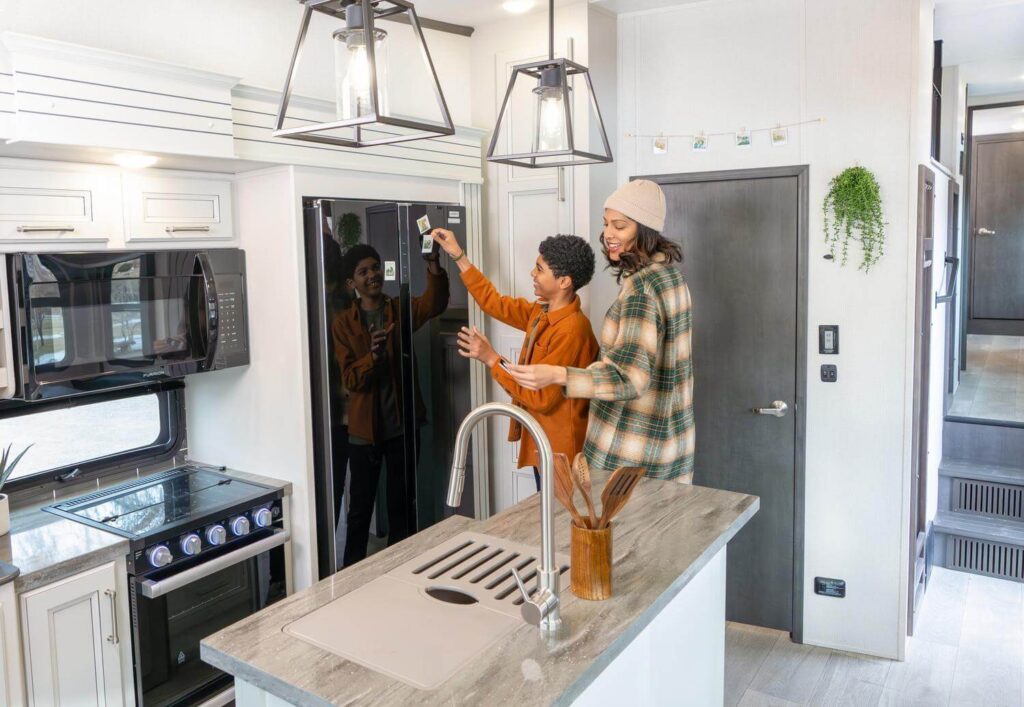
Before diving into common reasons why your RV refrigerator isn’t working, let’s clarify how most camper fridges operate.
- 12V fridges rely on battery power
- 2-way RV refrigerators select 120VAC first and LP gas second. If power goes out when running on 120VAC, it will switch to LP gas and back to 120VAC when power is restored.
- 3-way RV fridges choose 12VDC first. If that fails, they go to LP gas; if that fails, they go to 120VAC. If you aren’t aware that your new 3-way fridge chooses battery power first, you may wake up to dead batteries. Even the engine battery could be affected in a motorhome, leaving you stranded.
Technician Tip: If you own a 3-way RV refrigerator, use manual settings instead of automatic to prevent such issues.
Common RV Fridge Problems
Here are the most common issues new campers will experience with their refrigerator.
- Not turning on
- Only working on a single source (gas vs electric or vice versa)
- Not getting or staying cold
- Emanating odd sounds or smells
RV Refrigerator Troubleshooting
For each common problem, we’ll provide tips for 12-volt fridges and gas-electric models.
Fridge Isn’t Turning On

Does the fridge have power? Check this first. Most RV fridges require 12V power (with the exception of residential-style 120VAC compressor-style fridges). Even if you specify LP gas operation with a multi-way fridge, it will still require 12VDC power to spark the burner and open the gas valve.
For a quick power check, answer the following questions:
- Is your battery connected? Is it adequately charged? A charge below 10.5VDC will be insufficient for fridge operation.
- Is your battery disconnect switch engaged if equipped?
- Are circuit breakers in the On position?
- Are all fuses present and in good condition?
In addition, you can confirm that the fridge has turned on by checking the fridge light when you open the door. Ensure the bulb simply hasn’t burned out before assuming a lack of power to the entire fridge.
You should also monitor the fridge to ensure it cools down in a reasonable time frame. Place a fridge/freezer thermometer inside (if not equipped with a digital display, but it can be a nice backup in any case). Wait at least 2-3 hours. Check that the temperature is decreasing and the fridge is cooling.
Fridge is Only Working On a Single Source
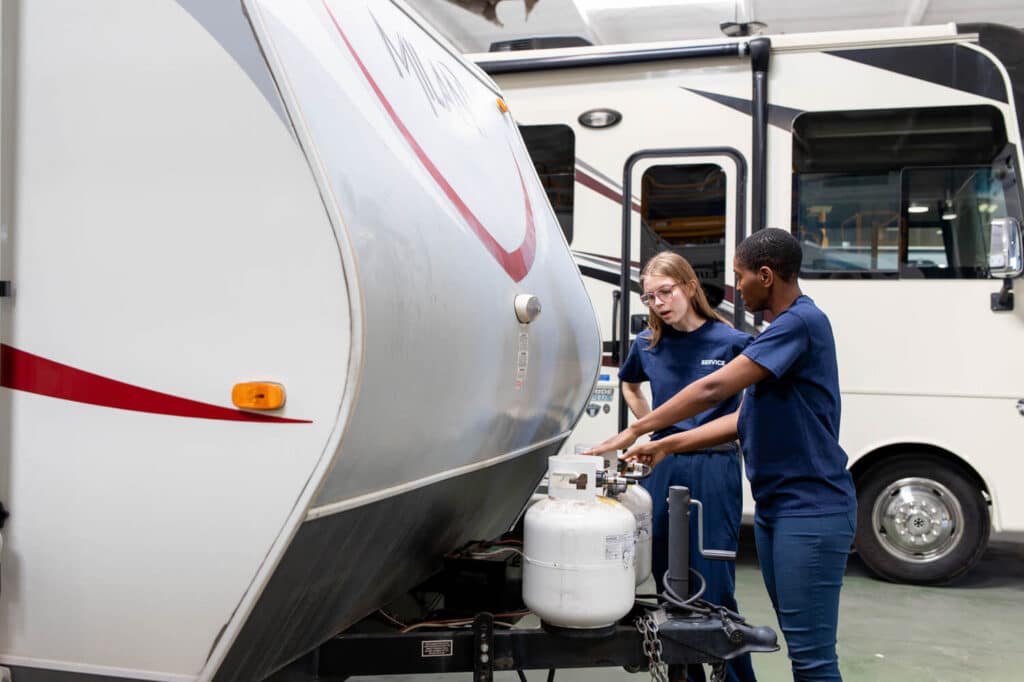
In some cases, RV refrigerators may only work on LP gas or electric, but not both. This problem is unique to gas-electric refrigerators, but there are some simple troubleshooting steps you can take.
If It’s Only Working on Propane:
If the fridge is cooling on propane, we can reasonably eliminate issues with the cooling coils or your 12VDC distribution system. This narrows our focus to your 120VAC power system. Verify that you’re connected to a suitable AC power source—30 or 50 amp—for your RV.
Then check that your circuit breaker hasn’t tripped and all fuses are present and in good condition. If using a surge protector, ensure it hasn’t tripped and shut off power to your RV.
If all these tests are complete without resolving the issues, the issue may lie with the 120V electric element or the 120V and 12V fuses on the fridge’s circuit board. In either case, contact a Camping World Certified RV technician for further troubleshooting.
Technician Tip: Campground wisdom might advise you to unplug the electric element from the board and connect it directly to a 120VAC extension cord to isolate the issue. This method bypasses the fridge’s safety features and can lead to a fire or electrocution. Never attempt this.
If It’s Only Working On Electric:
If the fridge is cooling on AC or DC power, we can reasonably eliminate issues with the cooling coils, your 12VDC distribution system, and the 120VAC distribution system. This narrows our focus to the LP supply and delivery system. Ensure that you have sufficient propane in your LP containers, that the container valves are fully opened, and that there isn’t a regulator preventing gas from flowing into the LP lines.
If you turned on an RV appliance before opening the container’s valve, an excess flow valve may have triggered to prevent the flow of propane from the container(s) to the appliance(s). This is commonly known as a lockout, and you’ll need to follow these steps:
- Turn off all appliances and close the valve on the container(s).
- Wait a few minutes before opening the container valves, then light a stovetop burner to purge air out of the gas lines and prove that the RV’s gas system delivers gas as designed.
- Once the cooktop is running well, turn it off and try the fridge again.
- If your fridge has unsuccessfully attempted to light three times, it may go into lockout.
- Turn the fridge off, wait a few minutes, and turn it back on to restart the ignition process.
If lockout issues persist, contact a Camping World Certified RV technician for help diagnosing and addressing potential issues like a dirty burner assembly or corroded electrode.
Fridge Isn’t Getting or Staying Cold
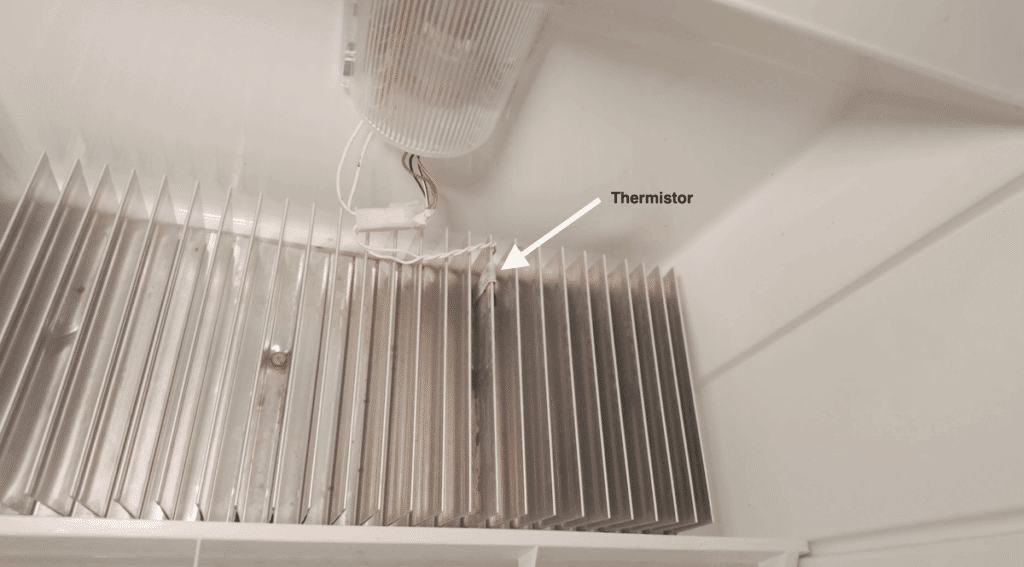
If your RV refrigerator isn’t getting or staying cold, your RV may not be level. Fridge cooling coils are placed at a specific angle for proper operation. Even if a fridge appears to be working, operating it in an unlevel RV increases wear and can lead to a more expensive repair.
RV fridges also take time to cool down. 12V fridges are typically quicker, requiring 2-3 hours to cool. Gas-electric absorption fridges can take 6-12 hours to cool fully. Some recommend turning them on the night before your trip begins so the fridge has plenty of time to cool before loading your perishables. Ensure your RV refrigerator has enough time to reach its set temperature.
Temp Adjustments & Smart Loading
Speaking of that set temperature, you may try adjusting the thermistor/thermostat to change the internal temperature. Perhaps another RV guest adjusted the thermostat without your knowledge. In RVs with ‘Colder to Warmer’ thermistor adjustments, it can be easy to bump and move the setting when loading and unloading the fridge.
The thermistor looks like a small piece of plastic clipped to one of the fins on the back of the fridge. You can adjust the temperature setting using the thermistor or, for fridges with a fixed thermistor, the control panel.
Additionally, RV refrigerators rely on sufficient airflow to provide even cooling because they don’t have an internal fan to circulate air. Avoid overloading it or placing warm leftovers inside before they’ve cooled.
Seals & Exterior Airflow
The fridge’s door seals can also cause inefficient cooling. They must be free of gaps or residue that could cause an incomplete seal. A quick and easy way to test the seal is “the dollar bill test”. Take out a dollar bill, shut the door on it, and then pull it out. There should be moderate resistance when trying to remove the dollar. Repeat this all the way around the door seal.
Most fridges also require adequate airflow around the exterior. Air must be able to move from the lower access panel up the backside and over the condenser coils. To check, open the exterior fridge access compartment and look for possible debris that may impede airflow.
Too much space behind a fridge can be as harmful as not enough. Most manufacturers of gas/electric models recommend less than 1″ from the back wall of the fridge compartment to the coils. This ensures the air flows through the coils and not past them.
Technician Tip: If used for RV storage, bug screens should be removed before operating the fridge, or they will prevent sufficient airflow.
Finally, you check that the fridge’s drip tube cap is in place. A missing cap allows warm air to move back into the fridge compartment, resulting in less efficient cooling.
Fridge is Producing Odd Sounds or Smells
Finally, there are some clear and obvious signs that your fridge should be professionally inspected.
- Do you notice a strong ammonia smell?
- Is it making odd gurgling sounds?
- Is there a yellow-green powder (copper corrosion) around the burner assembly, visible when the exterior access panel is removed?
These are all signs that your cooling coil may be faulty. Your best action is to contact a Camping World Certified RV technician for a complete diagnosis.
Technician Tip: The ammonia smell is the refrigerant leaking out of the cooling unit, and the yellow crystalline powder is the sodium chromate—added as a rust inhibitor—leaking out with the ammonia. A small amount of highly volatile hydrogen is also in the cooling unit, and if the cooling unit leaks and the hydrogen ignites, it can lead to a fire. Due to the fire hazard, the refrigerator should be shut down immediately in the event that a leak is suspected.
Where Can I Have My Refrigerator Fixed or Serviced?
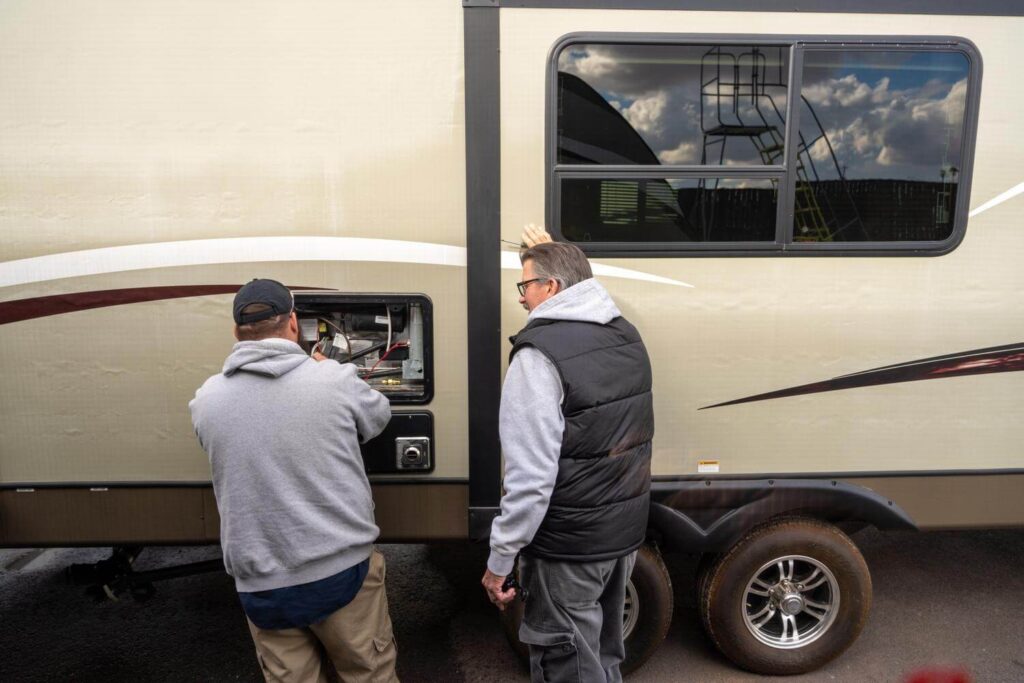
Having RV appliances like refrigerators professionally cleaned and inspected annually keeps them performing at their best and is a great way to catch minor issues before they require major repairs. Schedule a complete diagnostic with a Camping World Certified RV Technician during the offseason to reduce the chances of DIY troubleshooting during camping season.
We hope you’ve remedied your immediate fridge issue with these tips! Here are a few more useful RV troubleshooting guides:
- RV Generator Won’t Start?
- Why Is My RV AC Dripping Water Inside?
- RV Tankless Water Heater Not Working?
Is your RV fridge still not working? Let us know the signs and symptoms you’re experiencing.
Author
-
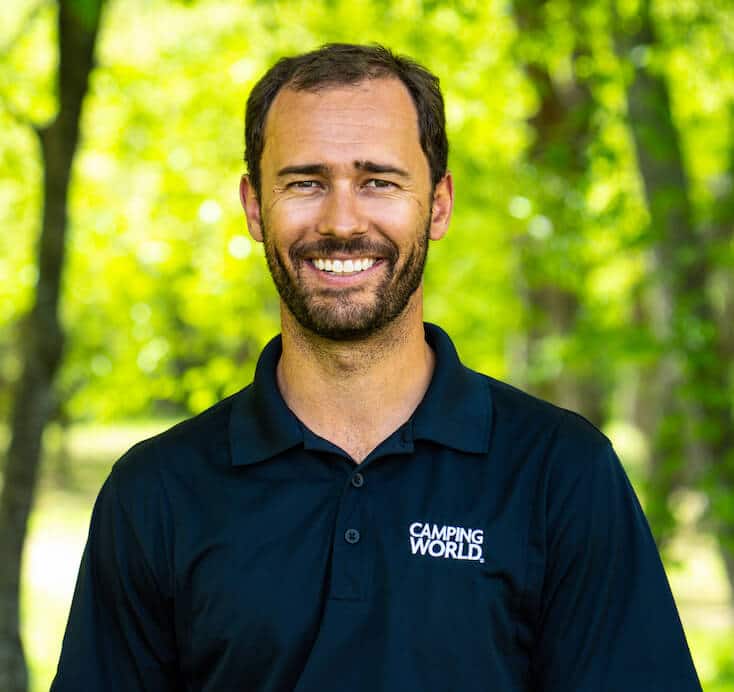
Tucker Ballister is our Content Strategist. He grew up RV camping in a Fleetwood Bounder with his parents and has lived and camped in two motorhomes and two travel trailers of his own. His current RV is a 2025 Forest River Campsite Ultra 26BW, which he loves taking on adventures with his wonderful partner and furry companion from their home base in Western North Carolina. Check out his adventures, gear reviews, and outdoor advice at thebackpackguide.com.
View all posts








